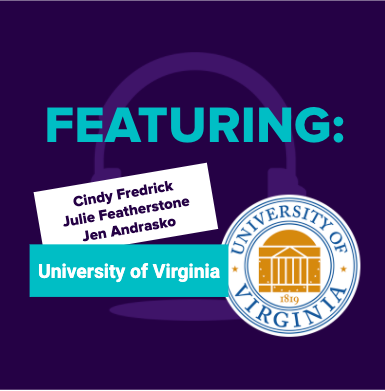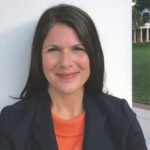Episode 25:
On this special episode of the RAISE podcast, Brent sits down with Cindy Fredrick, Julie Featherstone, and Jen Andrasko of the University of Virginia to talk about how UVA is re-starting their advancement economy by shifting to all-digital engagement and restarting fundraising activities.
Here are our top 3 takeaways from the incredible session:
Let your mission guide your actions.
We all know that these are unprecedented times. The COVID-19 pandemic has caused challenges on a scope that we have never seen before. So many things have changed, but some just shouldn’t — including your organization’s core mission.
EverTrue’s mission is to “build relationships in pursuit of a better world.” It is at the core of everything we do and has not changed in response to the COVID-19 pandemic. In reality, this mission has helped guide us and given us a clear path to providing value to our customers and the industry as a whole.
UVA has this same mentality. When reassessing their upcoming meetings and events, they have had to determine how they can still engage and connect alumni, faculty, and students in meaningful ways. For the team at UVA, this has meant converting all planned events into virtual experiences and reducing the number of events by 50% while still aiming to meet or exceed the number of attendees at these events. Virtual events remove most logistical constraints and barriers presented by geographical distance, enabling a more global audience of alumni, faculty, and students to participate.
In order to keep events meaningful, relevant, and engaging (and to combat Zoom fatigue), the team at UVA varies both event topic and medium, with the latter ranging from Facebook Live events, a throw back call-in show with faculty experts, or Zoom meetings. This allows their constituents of all ages and backgrounds to participate, while also allowing their internal team to choose the hosting platform most suited to the specific event, rather than using the same platform for everything.
Set new goals.
Last year, last year, UVA hosted 1,300 events and only 8 were virtual. This year, they’ll do 600+ virtually, while still aiming to capture the same number of attendees they would have had before the COVID-19 crisis. This might sound aggressive, but UVA is exactly right.
While we as an industry and as human beings need to continue to be sensitive to those whose lives and jobs have been impacted by this pandemic, we should also recognize how this new normal will impact our goals and metrics as we re-start the advancement economy.
Obviously, social distancing measures have resulted in more virtual visits and little to no in-person donor visits. But how can we use these changes to our advantage?
UVA, for example, has found that virtual events enable them to have interactions with more alumni across the globe than they could ever expect from physical events. The addition of virtual events has allowed the team at UVA to “magnify outreach in ways [they] didn’t know were possible.” And live attendees agree. 80% said that virtual events will now become a permanent fixture in their organization’s event strategy.
Virtual events also provide an opportunity to collect more data on engaged constituents than ever before. How times have you tried to take attendance at the door of a physical event and then not been completely sure that it was accurate? Or even what to do with that information?
If done correctly, virtual events can be an opportunity to take definitive attendance of who is attending and for how long. How many attendees are joining for the first time? How many gave you a different email address than the one you have in your database? How many have revealed previously unknown interests? Use this opportunity to get to know your constituents better!
Communication is key.
This last one goes for both internal and external communications.
We’re all still getting used to being fully remote, so making sure that our whole team is on the same page is essential. At UVA, Julie’s team sends out an internal newsletter to staff, fundraisers, and student workers to communicate any updates, share resources, and keep everyone informed. Of course, UVA is a large, decentralized organization, but the same message rings true for shops of all sizes.
Robust internal communication leads to better external communication, as well. When all teams and student callers are aware and knowledgeable about university resources, they are better able to communicate to students, faculty, and alumni. For example, UVA is welcoming graduating students into alumni professional success organizations early, offering Mission Collaborative workshops to alumni, and sharing Coursera higher education offerings with constituents.
Cindy Fredrick
Associate Vice President, Office of Engagement for Alumni, Parents and Friend
Julie Featherstone
Associate Vice President for Advancement Operations
Jen Andrasko
President & CEO, University of Virginia Alumni Association
If you liked hearing about UVA’s ideas about re-opening the Advancement Economy, check out the other episodes of the RAISE podcast.
And if you’re looking for guidance or support during the COVID-19 crisis, we’ve pulled together a library of resources to help you navigate this new normal. Check it out.



